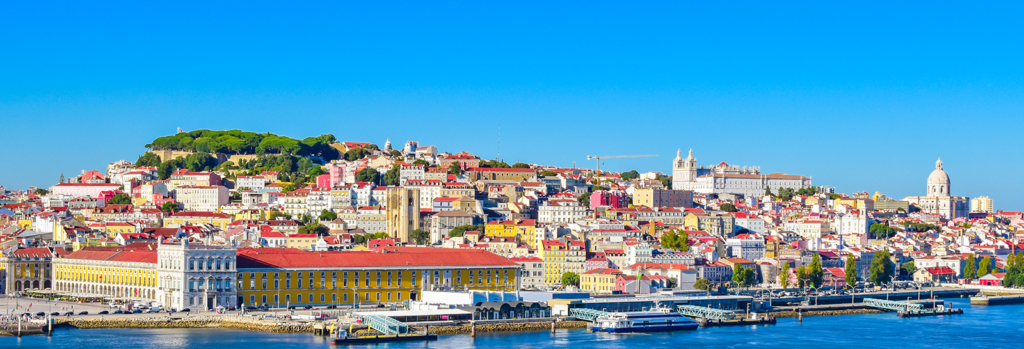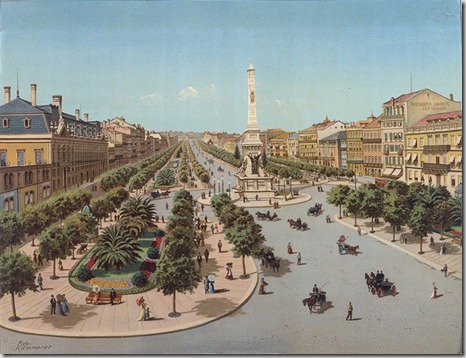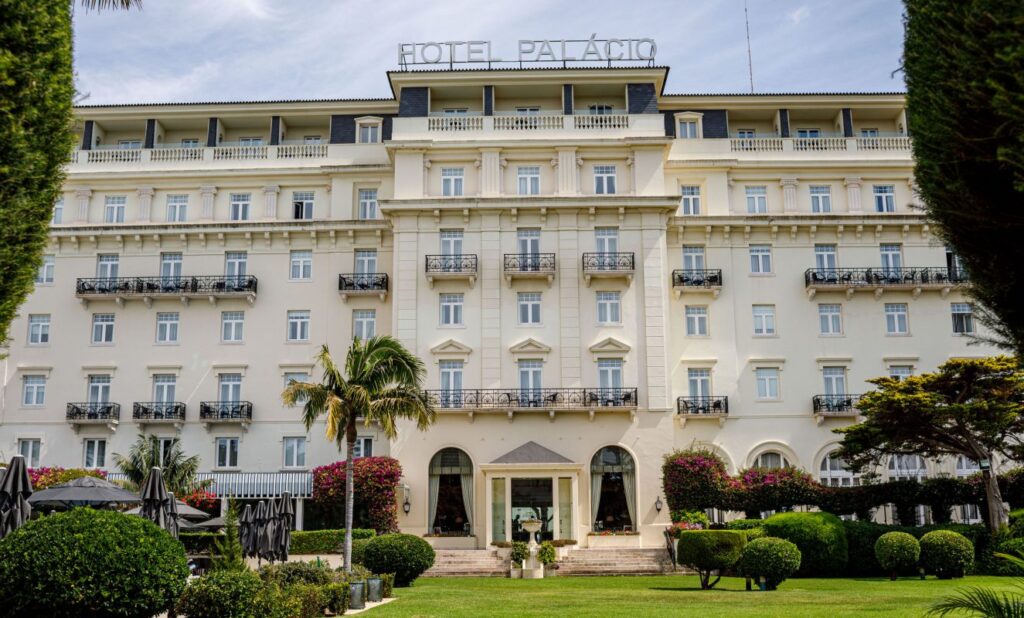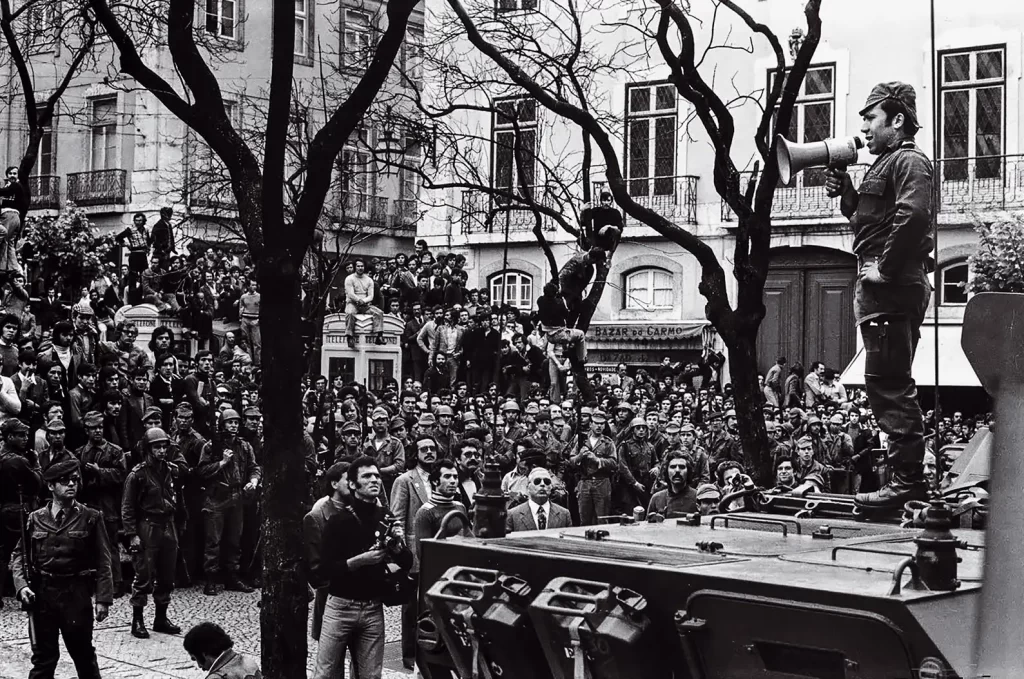Brief History of Lisbon

Lisbon is one of the oldest cities in the world and the second-oldest European capital city (after Athens), predating other modern European capitals by centuries. Did you know that the name Lisboa (previously Olissipo) is believed to be named after the popular legend that Lisbon was founded by the mythical hero Odysseus from Homero’s epic poem? Whether this is true or not, we will let you decide…
However, we do know for certain that Lisbon was established by pre-Celtic tribes and later Phoenicians. After being conquered by the Roman Empire in 139/138 b.C., its administrative status as a city was actually established by Julius Caesar. One of the oldest and most important traces of the Roman presence in Lisbon are the ruins of a magnificent theater (1st century) that can be found in Rua de São Mamede, 3A.

After the fall of the Roman Empire, it was ruled by a series of Germanic tribes from the 5th century, most notably the Visigoths. Later it was captured by the Moors in the 8th century. The Muslim influence is still visible in the Alfama district, an old quarter of Lisbon that survived the 1755 Lisbon earthquake: many place-names are derived from Arabic.
In 1147 Afonso Henriques conquered the city and in 1255 it became Portugal’s capital. It has since been the political, economic, and cultural center of the country.

In 1755, the city of Lisbon was destroyed by a devastating earthquake and following tsunami, which killed a lot of the population and destroyed 85% of the city’s structures. Several important buildings of the city were lost.
After the 1755 earthquake, the city was rebuilt largely according to the plans of Prime Minister and with the help of the 1st Marquis of Pombal. Instead of rebuilding the medieval town, Pombal decided to demolish what remained after the earthquake and rebuild the city center in accordance with principles of modern urban design.
It was reconstructed in an open rectangular plan with two great squares: the Praça do Rossio and the Praça do Comércio. The first, the central commercial district, is the traditional gathering place of the city and the location of the older cafés, theaters and restaurants; the second became the city’s main access to the Tejo River and point of departure and arrival for seagoing vessels.
In the first years of the 19th century, Portugal was invaded by the troops of Napoléon Bonaparte, forcing the Queen and Prince-Regent to flee temporarily to Brazil. By the time the new King returned to Lisbon, many of the buildings and properties were pillaged, sacked or destroyed by the invaders.

During the 19th century, the Liberal movement introduced new changes into the urban landscape. The principal areas were in the Baixa and along the Chiado district, where shops, tobacconists shops, cafés, bookstores, clubs and theatres proliferated. The development of industry and commerce determined the growth of the city, as the city grew farther from the Tagus. The old “Passeio Público” a meeting point for the Portuguese nobility gave place to the “Avenida da Liberdade = Liberty Avenue”, a major boulevard where you can now find international luxury hotels chains and famous brand shops, cafés and restaurants.
In 1908, Lisbon was the site of the regicide of Carlos I of Portugal and his heir, by the Republic movement, which culminated two years later in the establishment of the First Republic. By 1910 Portugal was in deep crisis: national anger over the 1890 British Ultimatum, the royal family’s expenses, changing religious and social views, instability of the two political parties (Progressive and Regenerador), and the regime’s apparent inability to adapt to modern times all led to widespread resentment against the Monarchy. Thus, in October of 1910 the Republican Revolution overthrew the centuries-old Portuguese monarchy, and installed the First Portuguese Republic.
In 1926 another revolution took place in the heart of Lisbon, which led to the end of the First Republic, and the birth of the National Dictatorship and the later “Estado Novo” = New State, a terrible time in our history.
The Estado Novo (1933–1974) was an authoritarian, conservative, nationalist, state corporatist regime of fascist inspiration, partially Catholic and traditionalist, with an anti-liberal, anti-parliamentary, anti-communist, and colonialist nature. The regime created its own State structure and a repressive apparatus (PIDE, penal colonies for political prisoners, etc.), relying on censorship, propaganda, paramilitary organizations, and in the cult of the leader. The dictatorial regime suppressed all the democratic freedoms of the liberal Republic, including freedom of the press, establishing censorship of newspapers, books and shows, namely cinema and theater.

During World War II, Lisbon was one of the very few neutral, open European Atlantic ports, a major gateway for refugees to the U.S. More than 100,000 refugees were able to flee Nazi Germany via Lisbon.
During this time Lisbon was also and a haven for spies, Casino do Estoril was their famous hangout. It was actually where Ian Fleming met the spy that inspired James Bond! Casino Royale is based on Casino Estoril, and it was the set for its movie adaptation.
In the 25th of April of 1974, the final military revolution took place again in Lisbon, led by left-leaning military officers that overthrew the dictatorship, producing major social, economic, territorial, demographic, and political changes in Portugal and its overseas colonies. It resulted in the Portuguese transition to democracy and the end of the Portuguese Colonial War.

The peaceful revolution began as a coup organized by the Armed Forces Movement, composed of military officers who opposed the regime, but it was soon coupled with an unanticipated popular civil resistance campaign. Negotiations with African independence movements began, and by the end of 1974, Portuguese troops were withdrawn from Portuguese Guinea, which became a UN member state as Guinea-Bissau. This was followed in 1975 by the independence of Cape Verde, Mozambique, São Tomé and Príncipe and Angola in Africa and the declaration of independence of East Timor in Southeast Asia.

The April Revolution is also known as the Carnation Revolution: when the population took to the streets to celebrate the end of the dictatorship, Celeste Caeiro – a restaurant worker – with other demonstrators following suit, started to place carnations in the muzzles of guns and on the soldiers’ uniforms.
The 25th of Abril is now a national holiday, Freedom day, in which we celebrate the revolution. To this day, we celebrate the revolution with the red carnations.
In 2024 we are celebrating the 50th anniversary of the April Revolution!!
